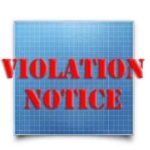 Landlords of tenancies covered by the Chicago Residential Landlord and Tenant Ordinance must make a number of disclosures to prospective tenants before entering into a lease. One such required disclosure, found in Section 5-12-100 of the CRLTO, is the notice to lessees of “conditions affecting habitability”.
Landlords of tenancies covered by the Chicago Residential Landlord and Tenant Ordinance must make a number of disclosures to prospective tenants before entering into a lease. One such required disclosure, found in Section 5-12-100 of the CRLTO, is the notice to lessees of “conditions affecting habitability”.
Section 100 imposes two written disclosure requirements. Section (a) deals with code violations and section (b) deals with utilities. The ordinance requires that the disclosure be made before a tenant initially enters into a lease or before the tenant renews a rental agreement. That means landlords must constantly be aware of these disclosures whether the lease is new or being renewed. Some “Chicago” lease forms (remember, there is no such thing as a “standard” Chicago lease) provide a space for the information right on the form but many (most) do not. Landlords without a form for this information should prepare one (we commonly provide such a form when we assist landlords with their lease drafting and review) and make sure it makes it into the tenant’s hands when the lease is offered.
With respect to section 5-12-100(a) dealing with code violations, a landlord must disclose:
any code violations which have been cited by the City of Chicago during the previous 12 months for the dwelling unit and common areas and provide notice of the pendency of any code enforcement litigation or compliance board proceeding pursuant to Chapter 13-8-070 of the municipal code affecting the dwelling unit or common area. The notice shall provide the case number of the litigation and/or the identification number of the compliance board proceeding and a listing of any code violations cited.
Perhaps the most notable aspect of this provision is that it requires notice to be provided for code violations on both the residential dwelling unit and the common areas. This means that condominium unit owners need to take special care to find out about violations in the common areas. A condominium owner who is not actively involved in following the doings of the condominium board might be blissfully unaware of problems in the building’s common areas.
How does a landlord even know if there are code violations? First and foremost, the landlord, if in compliance with the City’s multiple dwelling registration or if the City has up-to-date mailing information, probably already has notice of violations directly from the City. For landlords who don’t pay much attention, they can call the Building Department or they can check the Chicago “Building Data Warehouse” online. While I can’t vouch for the absolute accuracy of the information found on the City’s website, I suspect that this is where most tenants will be checking to see if the landlord omitted a notification.
Keep in mind that the ordinance requires the disclosure of violations cited in the previous twelve months. There is no exception for violations that were corrected!
If code violations are found, then the landlord must provide some additional information about them. If there is pending code enforcement litigation or pending compliance board proceedings, that must be disclosed. For pending proceedings, the landlord must provide the tenant with the case number or identification number for the action and a listing of the cited violations.
With respect to utilities, a landlord must give a tenant notice of any “notice of intent” issued by the City or any other utility provider to terminate water, gas, electrical or other utility services to the rental unit or the common areas of the rental building. If such a disclosure is require, it must disclose whether the notice is for the rental unit, the common areas, or both.
With respect to the obligation to disclose utility termination notices in 5-12-100(b), the landlord has a continuing obligation to produce the information. A landlord is not safe just because no notice was required at the beginning of the lease or a renewal. Anytime the landlord gets notice of a utility shut-off, the disclosure must be made.
When a landlord violates Section 5-12-100, either a tenant or prospective tenant (yes, a landlord can be liable even if no lease was ever signed or if the lease was signed but never commenced) shall follow the procedures outlined in Section 5-12-090 of the CRLTO. Section 5-12-090 indicates two penalties for violation of that provision. First, a tenant can terminate the lease after following the notice procedures found in Section 5-12-110(a) of the CRLTO and, second, if a landlord fails to comply within 14 days of written notice pursuant to Section 5-12-110(a), the tenant can recover a damages equal to the greater of one month’s rent or the tenant’s actual damages.
Thankfully, this is one of the few ordinance provisions that actually provides Chicago landlords with a right to cure a default in ordinance compliance. Many tenant representatives will “sneak” a request for the information into a broader letter indicating the landlord’s various CRLTO violations. Landlords, as always, need to take the ordinance seriously as the penalties for non-compliance can add up (and, of course, Section 5-12-180 would allow a prevailing tenant to obtain an award for attorney’s fees in addition to the penalties available for a violation of the notice requirements). This provision is just one more example of how a seemingly simple notice requirement can be complex in actual practice for a landlord.
